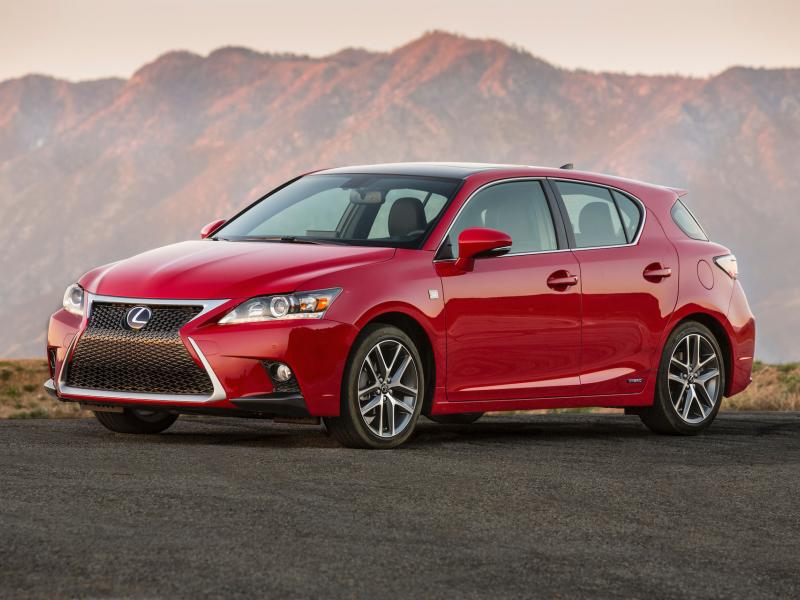Best and Worst from the North American International Auto Show
It’s been over sixty years since America’s motor city was born in a cloud of red, white and blue tire smoke — and baby, Motown’s got a brand-new bag. A high-quality, very possibly imported bag that can pair with your smartphone wirelessly, to be exact.
Changing consumer demands and competition with Vegas’ Consumer Electronics Show (CES) have kept North American International Auto Show (NAIAS) organizers on their toes in recent years. The results aren’t bad, but they’re very different from what a NAIAS attendee could expect even just a few years ago.
In short, NAIAS 2017 was a perfect microcosm of the transitional state of the auto industry. Efficiency and tech, while less sexy than the nostalgic values we traditionally associate with Detroit, were the undeniable stars of the show.
Volkswagen Applies for a Change of I.D.
Still reeling from the sting of dieselgate, Volkswagen can enjoy some much-needed distraction thanks to their NAIAS concept, the I.D. This isn’t the first time VW designers have riffed on the brand’s classic Microbus, so it’s hard taking the I.D. too seriously. But a practical, autonomous vehicle with ample all-electric power and nearly 400 miles of range would make an excellent first step towards VW’s rumored transport service.
Chevy Bolt Endorsed by the Woz
General Motors has struggled to find any traction in the increasingly important electric car segment. However, that could change if they can make a winner of the new Bolt.
The compact electric car is available now for less than $40k, perfectly positioning it to be a thorn in the side of frontrunner Tesla’s Model 3. Apple founder Steve Wozniak says he’s a fan of the Bolt over Tesla products, praising its user interface and practicality.
The #BoltEV has won yet another award this season. Congrats on driving home the 2017 #NACTOY award! #NAIAS pic.twitter.com/EQQZbBjVQA
— Chevy Electric (@ChevyElectric) January 9, 2017
Ford Fields a new Team of Horses
The blue oval party predictably arrived at NAIAS with their out-of-this-world 2017 GT ready for its close-up, and while they may not have had much in the way of outlandish concepts, they did deliver important news about some of their most popular products.
First, Ford will build the highly-anticipated Bronco, and it won’t be a mundane Australian crossover, but rather a fully trail-capable body-on-frame SUV. In addition to the Bronco, Ford is bringing back the Ranger midsize pickup to do battle with Chevy’s Colorado and the Methuselah of midsize trucks, the Toyota Tacoma. The 2018 F150 will also get diesel power and a considerable refresh.
Not to be left out of the horseplay, the Mustang will be updated with a new front end and more power from the flagship GT model. For the first time, it will also be available as a hybrid in 2018.
Kia Gets a Thumbs-Up From Maximum Bob
In a move President Trump would probably scoff at, former fighter-pilot and automotive genie-of-the-lamp Bob Lutz bestowed considerable praise on Kia’s newly announced Stinger GT. Lutz, who’s resume includes executive positions at Ford, GM, Chrysler and BMW compared the Stinger to quality products from German and American marques, citing its high build quality and effective styling.
The Stinger still has to strike true with car buyers before Kia can celebrate. But if it does, NAIAS 2017 may go down as the turning point when the Korean brand stopped building practical transport appliances and began giving the competition from Japan, Germany and the United States a real challenge.
GAC Proves China Has Some Catching-Up to Do
Cars have never been a strong point for China. Many Chinese brands are known for their incredibly accurate impersonations of foreign cars. While the three models that China’s GAC brought to NAIAS don’t fall into this category, they don’t exactly telegraph excitement for the country’s future in car design.
The GS7, GE3 and EnSpirit concept would hypothetically be sold under different subsidiary brands of GAC. Their futuristic design language was enough to earn GAC China’s first-ever spot on the NAIAS showroom floor, but still looks a bit cartoonish compared to cars from more seasoned attendees.
The GAC cars also lacked in motivation, offering hardware that, while adequate, wasn’t enough to make these three stand out next to the next-generation technology showcased by competitors.
Honorable Mentions
Toyota deserves credit for being the only automaker to belong in the best and worst categories. While the news of two new models in the redesigned Camry and Lexus LS 500 sparked buyer excitement, reactions to the Camry’s new styling were middling at best. When you’ve set the bar at mundane for ten years and managed to lead the world in sales for a non-pickup-truck, getting creative with appearances is a costly risk.
Nissan was also present, with a rakish take on their second-gen Vmotion concept paving the way for future design language and a new version of the very popular Rogue.
It seems Chrysler, Michigan’s home team, were the ones who had to fight hardest for attention at this year’s show. All they could muster was another, even-more-powerful version of the Challenger Hellcat and a farewell version of the Viper, which stopped appealing to people a decade ago.
Maybe Marshall Mathers said it best when he said: “Detroit, what?”





